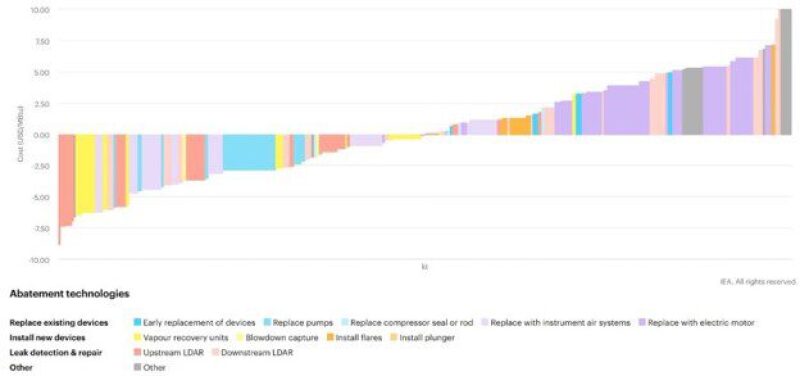Methane emissions should be a priority for the oil and gas industry, but incentives are necessary for that to happen, according to a panel of experts discussing the issue.
The panel discussion, presented by the Society of Petroleum Engineers (SPE) as part of its Gaia Talks series, was held live on LinkedIn. The panel—consisting of Darcy Spady, chief executive for Carbon Connect and 2018 SPE president; Tim Gould, head of division for Energy Supply Outlooks and Investment for the International Energy Agency (IEA); Wendy Brown, environmental director for the International Association of Oil and Gas Producers; and Julien Perez, vice president of strategy and policy for the Oil and Gas Climate Initiative, and moderated by Trey Shaffer, senior partner at Environmental Resources Management—laid out why methane emissions should be a priority and how to make that happen.
Raising awareness and creating incentives to reduce emissions will be key to bringing about the necessary change, the panel agreed.
The amount of methane emitted by the industry overall may not be the largest hurdle. Brown said that the oil and gas industry represents a small percentage, 12%, of overall methane emissions. This relatively small percentage should make the emissions easier for the industry to manage, she said.
Although the oil and gas industry is not the largest contributor of emissions, methane’s effect on global warming is 25 times worse than that of carbon dioxide (CO2), Spady pointed out. The environmental dangers of the potent gas had been neglected for years, Perez added, because it was not as well-known as CO2.
Although methane is more potent than CO2, it does not last as long in the atmosphere. Perez said the industry is now realizing that this shorter lifespan presents an opportunity for reduced emissions to have a rapid effect.
“By doing this (reducing emissions), you can address a quarter of the issue in a very quick manner,” Perez said. “It’s true the oil and gas industry clearly has a role to play. It represents a portion of the issue, but it’s a portion that can be addressed and fixed because the technology is there.”
Perez added that reducing methane emissions is made easier because the sources from the oil and gas industry are concentrated in a small number of large emitters.
The full panel agreed that reducing methane emissions should be a priority and could be an easy win for the industry. This, they agreed, would be made easier if emissions reduction could be tied to methane’s monetary value.
Cost Savings May Provide Incentives
“Unlike CO2, methane has commercial value, and any methane that can be captured can be monetized,” Gould said. “The oil and gas industry has an opportunity here because emissions reductions can result in economic savings and can be realized at lower costs.”
Gould also said that realizing these savings in the energy sector is easier than in the agricultural sector, which is a main source of methane emissions.
Despite the existing opportunity, the industry does not appear to be moving fast enough toward reducing methane emissions considering investments and societal pressure, Gould said.
“From our perspective, we see that the overall pace of change is still well short of what is potentially available and what would be needed to tackle climate change,” Gould said. “Around 80 million tonnes per year, in our estimation, of methane emissions are from oil and gas operations.”
Gould said the IEA believes that 75% of those emissions could be abated and that more than 40% of that total could be abate at no net cost, meaning that the value of the captured methane could be higher than the costs of the abatement measures.
“In our view, there’s still a lot of work to do to ingrain that culture of methane abatement into company operations in the same way that you’ve seen for safety,” Gould said.
Brown agreed that the pace of change in the industry is not fast enough.
“I think everything our industry is doing is to be commended,” Brown said. “But, at the global level, we really need to step up the pace and drive improvement across the whole industry.”
Near-Term Priorities
Brown highlighted three areas that could be key to initiating change in the industry: data accuracy, best practices, and emissions targets.
“There is high uncertainty in the numbers,” Brown said. “A robust, fit-for-purpose monitoring … of methane emissions is what we need. And we need that to provide consistent transparent data from all the companies emitting.”
Part of the change will come with younger engineers joining the industry, Spady said. The industry has had a long history of damaging practices, especially in drilling and completions, he added.
“How many times in the drilling and completion world did we see in the procedure ‘vent to atmosphere’?” he asked. “We can’t do that anymore.”
Before looking at emissions targets, however, there must be transparency in how those emissions are measured. Gould noted that actual methane-emission readings and desktop calculations can be considerably different. But, new sources of data coming from technologies using aerial measurements and satellites will help introduce transparency to the industry, he added.
One such initiative helping to bring about change has been the IEA Methane Tracker. In its 2020 Methane Tracker report, the IEA estimated 82 mt of methane emissions were released from oil and gas operations in 2019, split in roughly equal parts between oil and gas.
These emissions came from a wide variety of sources along the oil and gas value chains, from conventional and unconventional production, from the collection and processing of gas, and from gas transmission and distribution to consumers.
The methane tracker also highlighted several abatement options to provide guidance on best practices, such as which devices can be replaced and how policies and regulatory approaches can be used to motivate change (Fig. 1).

Voluntary initiatives already in place include the Methane Guiding Principles, the Oil and Gas Climate Initiative, and the Oil and Gas Methane Partnership.
Overall, the panel agreed that the potential for cost savings make it an easy opportunity for the industry to tackle.
“It’s an easy win,” Spady said. “The technology exists. I think it’s a great easy start that we can demonstrate to the world that we are serious about climate in general. With pressure from financial institutions, from the public, we have a chance.”

